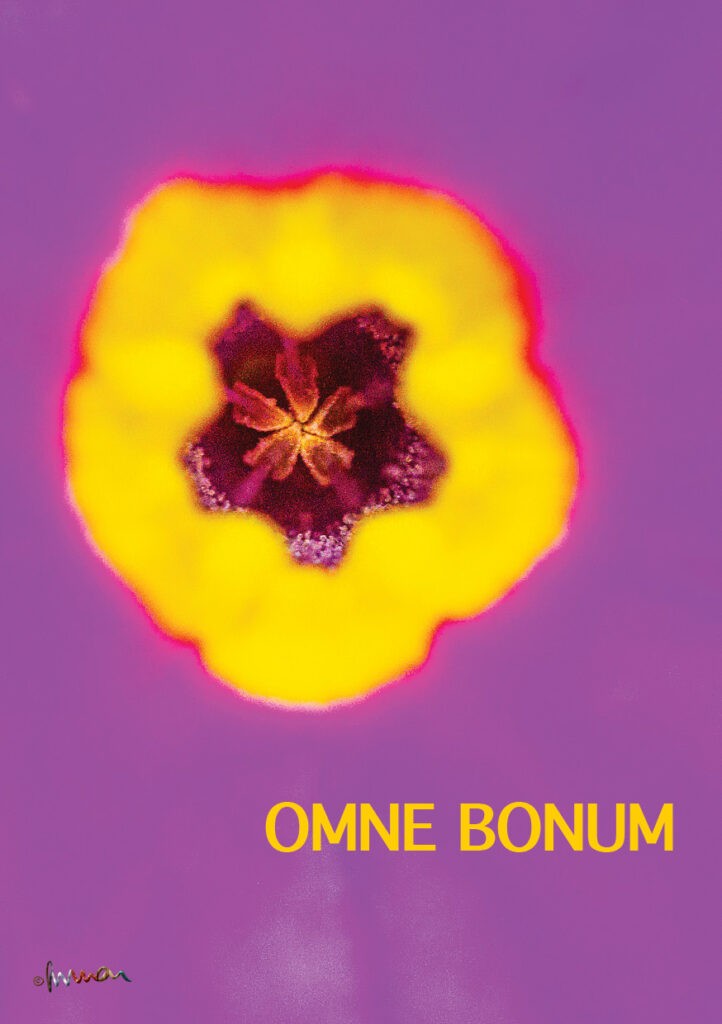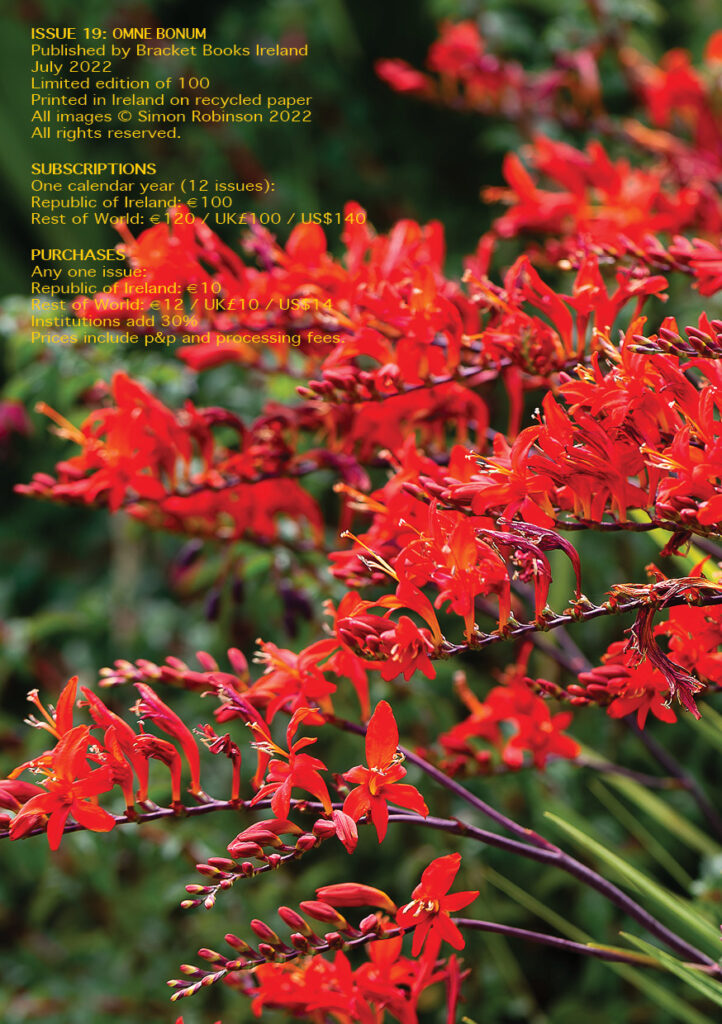Omne Bonum (Every Good Thing) is an incomplete encyclopaedia created by James le Palmer (died ~1375) which survives as four volumes in the British Library. Can we say that every thing is good in our knowledge 650 years on?


Available now from Bracket Books Ireland at outlets like FabHappy or WalkingCommentary.
Our retina and visual cortex combination offer exquisite spatial acuity and astounding temporal resolution. However, our very survival necessitates prioritising speed of vision over precision. That our perception is flawed by inherent compromises underpins Gestalt theory: we see lines where there are dots, faces on the Moon and the like. What you get isn’t always what you see.
Take your holiday snaps. For example, a digital camera’s red-green-blue range of hues (or gamut) is significantly smaller than the gamut that your eyes can register. Of course, you’ll accept pictures as accurate if they’re pleasing. The same gamut limitation is true of the red-yellow-blue paint system used by artists or the cyan-magenta-yellow-key (black) used in printing. What you perceived is rarely what you recorded but hey, your brain will fix that for you, adjusting to recall what you recorded as if it was what you perceived.
Newton’s big trick with the prism wasn’t splitting light into its constituent colours. Rainbow splitting had been understood for millennia. His breakthrough was using a second prism to recombine the chromatic constituents to produce white light. Newton, the exceptional scientist, also subjectively divided the spectrum into seven colours, according to contemporaneous theories of natural harmony. Unsurprisingly, his arbitrary hue assignments don’t match those we now define by wavelengths: his indigo has become blue and his blue has turned cyan. Perhaps we forget that his real insight (in light) was that second prism. Meanwhile, we’re calibrating cameras, monitors and printers to maintain colours captured by sensors and redisplayed with diodes and inks.
Confused by colour names? Think about colour metaphors in culture. The blue of English pornography is yellow in China though yellow in Japan is linked to bravery. That same yellow elsewhere indicates cowardice while representing jealousy in Germany and betrayal in France. There were reds both under and over the beds as communist Russians raced conservative Americans towards mutually assured destruction. You’ll go on green at traffic lights all over the world despite it suggesting death in South America. And to be green (in English) is to be envious, perhaps of the lives lived before we needed to become green to save the planet.
Each of these plants were found and captured in Ireland in the four weeks after the June solstice. An attempt has been made to rank them by dominant colour, ranging from short to long wavelength, from most to least energetic hues. And of course, the plants won’t look the same on paper as they did in the field or on the camera screen. And the computer screen looks quite different to my memory despite my best efforts to be faithful to the colours. Did I at least name them correctly?
The Bracket Books chapbooks are available for online purchase through FabHappy and TheUpliftKit but perhaps you’d prefer to enquire here. They’re being issued by the calendar month, each edition in 2022 limited to 100 copies, each copy uniquely numbered and posted at the end of each month.
Click PRICING for 2022 series subscriptions and single edition purchases.

Leave a Reply